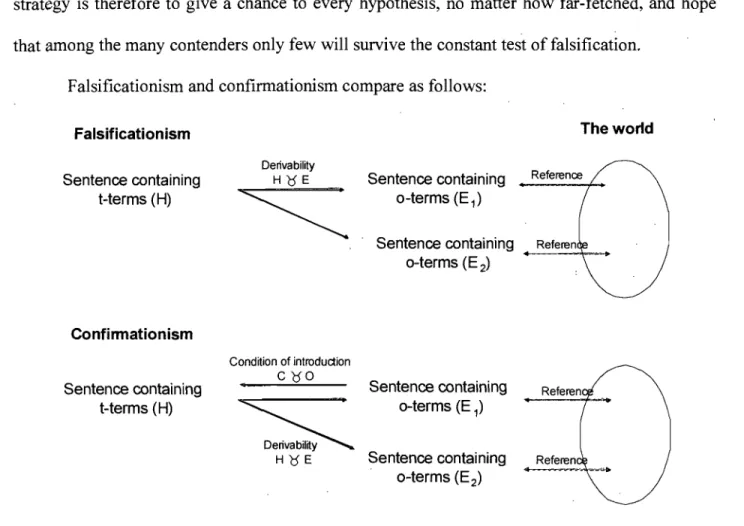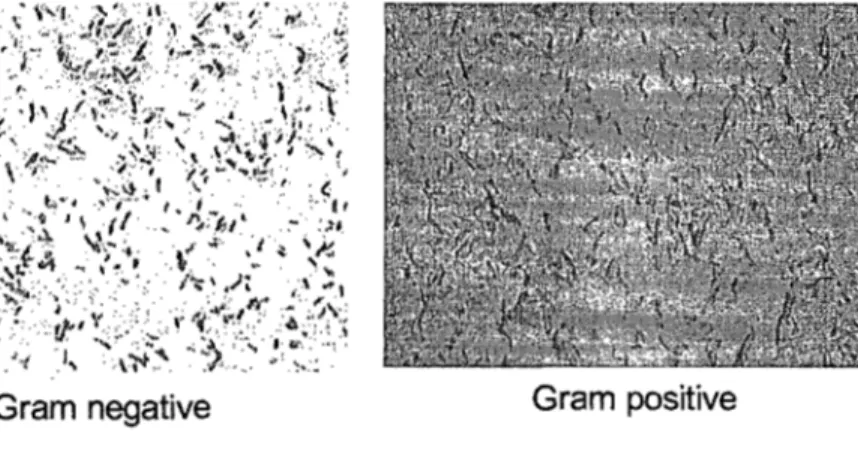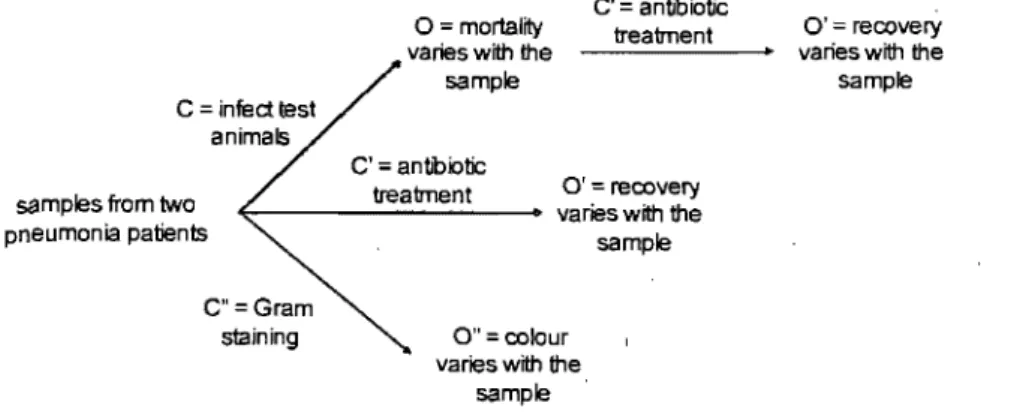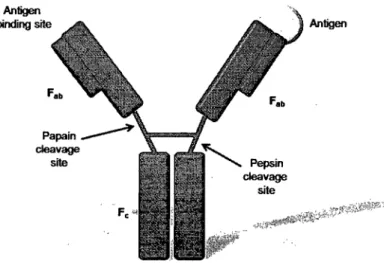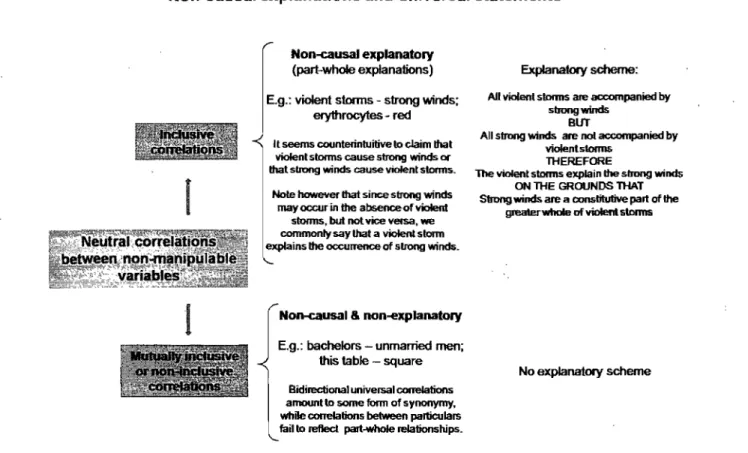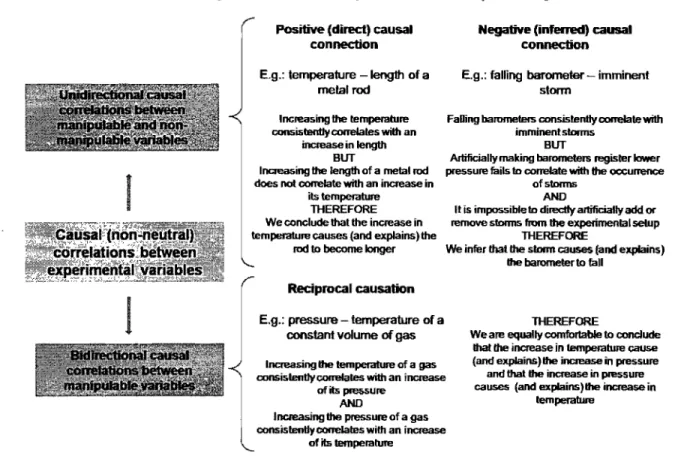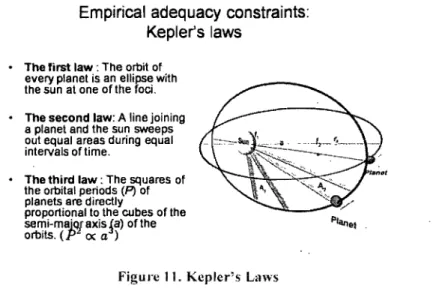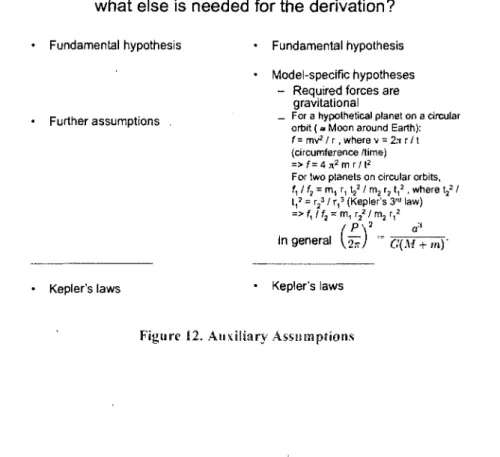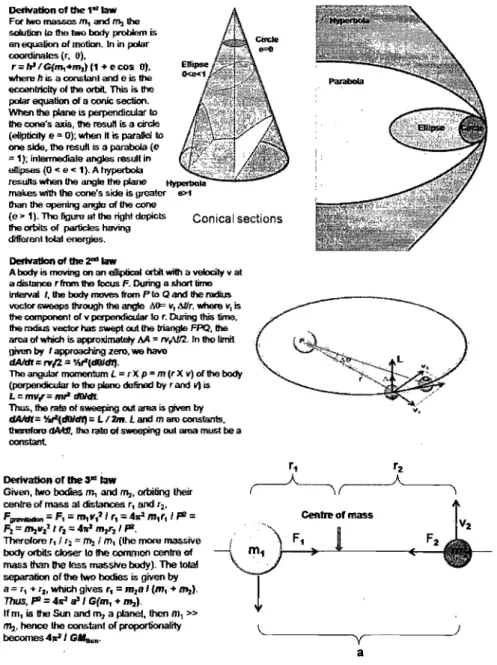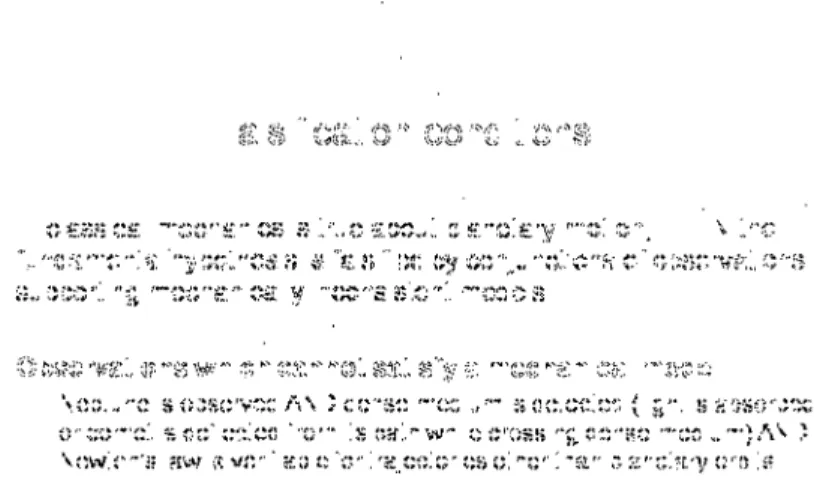Direction des bibliothèques
AVIS
Ce document a été numérisé par la Division de la gestion des documents et des archives de l’Université de Montréal.
L’auteur a autorisé l’Université de Montréal à reproduire et diffuser, en totalité ou en partie, par quelque moyen que ce soit et sur quelque support que ce soit, et exclusivement à des fins non lucratives d’enseignement et de recherche, des copies de ce mémoire ou de cette thèse.
L’auteur et les coauteurs le cas échéant conservent la propriété du droit d’auteur et des droits moraux qui protègent ce document. Ni la thèse ou le mémoire, ni des extraits substantiels de ce document, ne doivent être imprimés ou autrement reproduits sans l’autorisation de l’auteur.
Afin de se conformer à la Loi canadienne sur la protection des renseignements personnels, quelques formulaires secondaires, coordonnées ou signatures intégrées au texte ont pu être enlevés de ce document. Bien que cela ait pu affecter la pagination, il n’y a aucun contenu manquant.
NOTICE
This document was digitized by the Records Management & Archives Division of Université de Montréal.
The author of this thesis or dissertation has granted a nonexclusive license allowing Université de Montréal to reproduce and publish the document, in part or in whole, and in any format, solely for noncommercial educational and research purposes.
The author and co-authors if applicable retain copyright ownership and moral rights in this document. Neither the whole thesis or dissertation, nor substantial extracts from it, may be printed or otherwise reproduced without the author’s permission.
In compliance with the Canadian Privacy Act some supporting forms, contact information or signatures may have been removed from the document. While this may affect the document page count, it does not represent any loss of content from the document.
"":
··\..:1
.Université de Montréal
Strategies of Empirical Justification in Experimental Science
Par
Tudor Baetu
Département de philosophie Faculté des arts et des sciences
Thèse présentée à la Faculté des études supérieures en vue de l'obtention du grade de doctorat
en philosophie Mai,2008 © Tudor Baetu, 2008
Université de Montréal Faculté des études supérieures
Cette thèse intitulée :
Strategies of Empirical Justification in Experimental Science .
présenté par : Tudor Baetu .
a été évaluée e) par un jury composé des personnes suivantes:
.~R~~.\.\\s.:
..
-J~~.~~~~~
président -rapporteur
.. G.((.f/ Tlu
il!..
J'".L/l/o.4 ... .
directeur dere~~-rche
... .J..
fi
li.
f./.
u. ....
J.4»/
d. ... .
membre du jury
...
~%.~.f\~
...
Dt
~':M~·.4;
....
examinateur externe
Résumé:
Le but de cette thèse est de défendre la conception hypothético-déductive de la pratique scientifique. Cette thèse traite de problèmes fondrunentaux concernant la formulation et la
confirmation des hypothèses explicatives. . .
En règle générale, les hypothèses scientifiques sont déterminées à la fois par ·les données empiriques disponibles et par des considérations théoriques. La première partie de la thèse traite des composantes du donné empirique. L'analyse d'exemples tirés de la psychologie cognitive, la microbiologie et l'immunologie me permet de conclure. qu'il est possible d'établir un réseau de corrélations expérimentales sans l'aide d'une structure interprétative surajoutée. Ce savoir pure-ment expéripure-mental garantit la coréférence de diversés interprétations théoriques, et, par consé-quent, une continuité extra-théorique ou infra-théorique du savoir scientifique.
La deuxième partie traite des composantes théoriques dans la formulation des hypothèses. La théorie gravitationnelle de Newton est utilisée comme étude de cas afiri d'investiguer le ho-lisme et les problèmes qu'il pose, plus précisément en ce qui concerne les hypothèses auxiliaires et l'idéalisation dans leur rapport avec la confirmation, la falsification et la méthode hypothético-déductive en général.
Dans la troisième partie de la thèse j'explore l'interaction entre les ingrédients empiriques et théoriques des hypothèses scientifiques. La transition de la génétique mendélienne à la généti-que classigénéti-que, caractérisée par l'interprétation physigénéti-que d'une explication conceptuelle, me per-met de discuter certains aspects du réalisme sémantique. La transition de la génétique classique à la biologie moléculaire est à l'origine d'un débat sur la continuité théorique du savoir scientifi-que; par rapport à ce débat, je conclus que l'élucidation des mécanismes moléculaires contribue d'une façon significative à l'explication génétique, et que, malgré la complexité du problème, il est possible et nécessaire de redéfinir la notion classique. de gène en termes de structures molécu-laires. Dans le dernier chapitre, je tente de montrer comment différents modèles explicatifs
peu-vent être combinés afin de générer de nouvell~s hypothèses. .
Mots clé:
confirmation, épistémologie, explication, idéalisation, mécanisme, méthode hypothético-déductive, philosophie de la biologie, philosophie des sciences
Abstract:
The primary purpose of this thesis is to defend and update the hypothetico-deductive ac-count of the scientific practice. It treats of fundamental issues concerning the formulation and confirmation of explanatory hypotheses.
Typically. scientific hypotheses are constrained by both available empirical data and more general patterns of theoretical explanation. Accordingly, Part 1 deals with empirical con-strains on hypothesis formation. Based on study cases drawn from cognitive psychology, micro:-biology and immunology, 1 argue that it is possible to establish a web of empirical and experi-mental correlations in the absence of higher-Ievel theoretical interpretations. Experiexperi-mental knowledge ensures that different theoretical interpretations can continue to corefer to the same body of experimental data, thereby granting an extra-theoretical continuity of scientific knowl-edge. Aiso an attempt is made to revivify the observable theoretical distinction by analysing actual examples of experimental knowledge and how this knowledge constrains higher-Ievel theoretical interpretations in the context ofhypothetico-deductive approaches to scientific meth-odology.
ln Part II, 1 concentrate on the theoretical constraints shaping the formulation of scientific hypotheses. Newton's gravitational model is used as a study case to investigate holism and the problems it entails, most notably issues concerning baèkground assumptions and idealisations, in respect to confirmation, falsification and the hypothetico-deductive method in general.
In Part III 1 explore the interplay between the empirical and theoretical constraints shap-ing the development of genetic explanations. The transition from Mendelian genetics to classical' genetics is characterised by the physical interpretation of conceptual explanation and therefore pro vides an excellent opportunity for discussing issues related to semantic realism. The subse-quent transition from classical genetics to molecular biology is at the origin of a rather heated debate concerning the theoretical continuity of scientific knowledge. 1 argue that the elucidation of the mechanisms underlying the properties of genes hypothesised by classical genetics contrib-utes directly to the genetic explanation and that, despite the complexity, it is possible and neces-sary to redefine the classical 'gene' in molecular terms. In the final chapter, 1 show how different explanatory models combine together in order to yield new hypotheses and open hew avenues of research.
Keywords:
confirmation, epistemology, explanation, hypothetico-deductive method, idealisation, mecha-nism, philosophy ofbiology, philosophy of science
Contents
Table of Figures ... ; ... : ... ~ ... .ix
Introduction ... : ... 1
EXPERIMENTAL CONSTRAINTS ON HYPOTHESIS FORMATION .... : ... : ... 9
THE HYPOTHETICo-DEDUCTIVE METHOD: , A GENERAL FRAMEWORK FOR UNDERSTANDING SCIENTIFIC REASONING ... ; ... 10
1.1 The Hypothetico-Deductive Method and Its Immediate Relative, Falsificationism ... 10
1.2 F alsijicationism, in Principle and in Practice ... Il 1.3 The Lessons ofConfirmationism ... 14
.; 1.4 Lower-Level {'Input') Empirical Constraints on Hypothesis Formation ... 19
OPERA TIONALL y DEFINED COREFERENCE ... 21
2.1 Operationalism and Reference ... ~ ... 21
2. 2 Descriptive and Causal Accounts of Reference ... 23
2.3 Rejèrence Incommensurability ... 25
2.4 Reference Continuity across Distinct Models and Theories ... 26
2.5 Cumulativity without Unification ... : ... 29
THE OBSERVABLE UNOBSERV ABLE DISTINCTION IN THE ACTUAL EXPERIMENTAL PRACTICE ... 32
3.1 The Observable-Theoretical Distinction ... 32
3.2 Psychological Considerations ... 33
3.3 Higher-Level Theoretical Interpretations ... 37
3.4 Knowledge in the Absence of a Theoretical Interpretation: An Example ./rom Microbiology ... 39
3.5 Properties of Objects vs. Properties of Objects in Certain Experimental Contexts ... .42
3.6 Towards a More Flexible Approach to the Observable-Unobservable Distinction ... .44
3.7 Concluding Remarks ... : ... 47
THE THEORETICAL INTERPRETATION OF EXPERIMENTAL DATA ... .49
4.1 The Historical Development of Scientific Knowledge ... .49
4.2 Mixing Direct Observations and Uninterpreted Experimental Data: An Example ./rom Immunology ... ' ... : ... 51
4.3 Lower-Level Inductive (Non-Interpretative) Inferences ... 57
4.4 "Navigating By the Instruments" ... : ... 59
4.5 Higher-Level Interpretative Hypotheses ... 61
5.2 Experimental Constraints and Justification ... ~ ... 67
5.3 Conclusions ... ... 69
THEORETICAL CONSTRAlNTS ON HVPOTHESIS FORMATION ... ~ ... 72
THEORETICAL EXPLANATIONS ... ~ ... ; .. : ... 73
6.1 Theoretical Contexts' ... : ... 73
6.2 The Deductive-Nomological Account of Explanation ... : .. ~ ... 74
6.3 Explanation vs. Justified Explanation ... i ... ... 74
6.4 The Causal Connections Underlying Scientific Explanations ... ~ ... 76
6.5 Statistical Relevance ... 80
6.6 Experimental Manipulation ... ~ ... 81
6.7 Cognitive and Realist Interpretations of Experimental Manipulation ... ; ... 84
6.8 Causal Mechanisms ... ... : ... 87
6.9 Conceptual Unification ... 91
6.10 The Complementarity and Partial Overlap of the Proposed Accounts of Explanation .... 95
MODELS RELATED TO THEORETICAL EXPLANATIONS ... : ... 100
7.1 Confirmable Explanatory Models ... 100
7. 2 Fundamental Hypotheses and the Model- Theory Distinction in Science ... 104
7.3 Target Empirical Laws ... 1 07 7. 4 Model-Specific Hypotheses ... : ... ... 108
7. 5 Some Remarks Concerning Common Post-Positivist Concerns ... 109
THE CHALLENGES OF CONFIRMATION HOLISM ... 113
8.1 Confirmation Holism ... ... 113
8.2 Newton 's Gravitational Model of Planetary Motion ... 115
8.3 Alternate Mechanical Models ofPlanetary Motion .. ; ... 120
8.4 Direct Confirmation ofModel-Specific Hypotheses ... ~ ... 120
8.5 Direct vs. Holistic Confirmation ... ~ ... 123
8. 6 Falsification Conditions ... 124
8.7 Dissolving the Ho/ist Conundrum ... : ... : ... 125
8.8 Concluding Remarks ... : ... 129
MODELS AS IDEALISED REPRESENTATIONS ... 131
9.1 Introduction ... ; ... 131
9.2 The Resemblance and lnferential Accounts ofScientific Representation ... 132
9.3 Strengths and Weaknesses o/the lnferential Account.. ... : ... 136
9.5 A Hypothetico-Deductive Treatment of Idealisations ... 152
9.6 Models as Representations of the 'Dynamic Structure' of Phenomena ... 160
9.7 Concluding Remarks ... : ... 164
THE REALISM - ANTIREALISM DEBATE: THE CASE OF MOLECULAR BIOLOGY ... 165
REALISM AND ANTIREALISM IN CONTEMPORARY PHILOSOPHY OF SCIENCE ... 166
'10.1 Scientific Realism ... · ... ~ ... 166
10.2 Argumentsfor Metaphysical Realism ... : ... 167
10.3 Issues Related to Semantic and Epistemological Realism ... 170 .
THE PHYSICAL INTERPRETATION OF MENDEL'S GENETIC EXPLANATION ... : ... 173
11.1 Conceptual Explanations: The Example of Mendelian Genetics ... '" 173 11.2 Instrumentalism and the Independence ofEarly Genetic Theories from Biochemistry, Molecular Biology and Developmental Biology ... : ... 176
11.3 A Partial Physical Interpretation for Mendel 's. Genetic Explanation and the Birth ofClassical Genetics.: ... 179
11.4 The Demise of the Instrumentalist Interpretation ... 181
THE CONTINUITY AND CONVERGENCE OF SCIENTIFIC KNOWLEDGE ... 186
12.1 Reference Commensurability vs. Theoretical Continuity ... 186
12.2 Arguments against the Convergence and Continuity ofScientific Knowledge ... 188
12.3 Overlapping Empirical Constraints ... : ... 190
12.4 The Case ofGenetics ... : ... 192
12.5 Fundamental vs. Model-Specific Ontologies ... ; ... 195
REDUCTIONISM ... 199
13.1 Two Kinds of Reduction ... ; ... ~ ... · .. · ... · ... 199
13.2 The Ali-Important 'Molecular Details' ... 201
13.3 The Issue of Simplicity ... ... 207
13.4 The Molecular Definitions of the Term 'Gene ' ... 209
13.5 Gene Expression ... 212
13.6 Gene Expression: A More Complete Definition .... ~ ... 216
13.7 Gene Expression Regulation ... ~ ... · ... 218
13.8 Overlapping Chromosomal Loci ... ... 223
1 13.9 The Reduction ofClassical Genetics to Molecular Biology is Complex, but not impossible ... ~ ... 226
13.10 A Simplified Approach to the Reduction of Classical Genetics to Molecular Biology: Differences in Genotype Typically Reduce to Differences in DNA Sequences ... 230 13.11 The Convergence and Cumulativity ofScientific Knowledge
THE CONTRIBUTION OF EXPERIMENTAL DATA TO THE EMPIRfCAL ADEQUACY OF SCIENTfFIC
EXPLANATIONS ... ; .. ; ... ; ... ~ ... 234
14.1 The Realism Antirealism Spectrum ... , ... 234
14.2 Constructive Empiricism ... 236
14.3 Direct Observability ... : ... 238
14.4 Observational vs. Experimental Data ... 240
14.5 Modal & Dispositional Properties ... : ... : ... : ... 241
14.6 The Empirical Status of Experimental Data ... 243
14.7 The Continuily between Observational and Experimental Data ... 245
14.8 Experimental Data: Actual or Counterfactual? A More Problematic Example ... 248
14.9 Experimental Data is not used counterfactually and Similarity does not alleviate the Need for Confirmation ... 256
14.10 Models Consisting of a Chain of Extrapolative Hypotheses ... 257
14.11 Holistic Confirmation of a Chain of Extrapolative Hypotheses ... 260
14.12 The Conjunction Argument and A bductive Reasoning ... 262
Conclusion ... 265
Table of Figures
Figure 1. Verificationism ... .' ... :: .. ~ ... ; ... ~ ... 15
Figure 2. Falsificationism and Confirmationism Compared ... ~ ... 18
Figure 3. Gram Staining ... ~ ... ~ .... ; ... 40
Figure 4. Correlations between Observational Outputs and Empirical Data ... 41
Figure 5. Molecular Structure of Antibodies ... ; ... 51
Figure 6. Example of Biochemical Analysis ... 56
Figure 7. Reading Electrophoresis Gels ... 64
Figure 8. Non-causal explanations associated with universallaws or statements .. : ... 78
Figure 9. Causal explanations associated with experimental manipulation ... 83
Figure 10. The Three Laws of Dynamics ... 116
Figure 11. Kepler's Laws ... : ... 117
Figure 12. Auxiliary Assumptions ... , ... : ... ' ... 118
Figure 13. Mathematical Derivation of Kepler's Laws ... ~, ... 119
Figure 14. Direct and Holistic Confirmation ... 124
Figure 15. Confirmation and Falsification Conditions ... ~ ... 126
Figure 16. Respects of Comparison ... 152
Figure 17. Deductive Treatment ofIdealisations ... 157
Figure 18. The Convergence and Continuity ofScientific Knowledge ... 160
Figure 19. Mendelian Inheritance ... : ... 174
Figure 20. Chromosomal Maps ... 181
Figure 21. History of Genetics & Central Dogma of Molecular Biology ... 185
Figure 22. The Development of Genetic Theories ... 193
Figure 23. Classical vs. Molecular Analysis ... ; ... 205
Figure 24. The Concept of 'Gene' ... 210
Figure 25. Promo ter and Coding Sequences within a Gene ... :.:~ ... 215
Figure 26. Causal Chains Linking Genotype and Phenotype ... 217
Figure 27. The Chemical Structure of the lOB Polypeptide ... : .... ~ ... 220
Figure 28. The Regulation of the lOB Gene ... ~ ... 221
Figure 29. Genes as 'subroutines in the genomic operating system' ... : ... 225
Figure 30. The Convergence and Continuity of Genetic Theories ... 232
Figure 31. The Realism - Antirealism Spectrum ... 235
Figure 32. Constructive Empiricism ... : ... : ... ; ... 237
Figure 33. The NF-DB Signalling Pathways and Apoptosis ... 250
Figure 34. NF-DB Dependent Regulation ofTRAIL ... 253
Figure 35. NF-DB Dependent Regulation ofTRAIL in Primary T-cells ... ~ ... 255
Figure 36. The 'TRAIL-mediated' Model ofT-cell Death during HIV Infection ... 259
Introduction
The primary purpose of this thesis is to defend and illustrate the use of the hypothetico-deductive method in the scientific practice. It provides
an.
introduction to sorne of the philosophi-cal issues concerning the formulation and confirmation of explanatory hypotheses.The rise of and subsequent demi se logical positivism had a most peculiar effect on
con-, '
temporary philosophy of science. By the end of the 19th century, the basic requirement of empiri-cal investigation and empiriempiri-cal confirmation led Mach to believe that scientific theories are summaries of experimental data constructed for the purpose of organising data into a readily comprehensible format. He held that scientists should restrain from appealing to unobservables, and that, in the rare cases when it proved useful to introduce them, they should be allowed a purely instrument role. In the 1920s, logical positivists pushed matters a step further and pro-posed a rigorous formaI programme aiming to reduce aU assertions about unobservables to asser-tions about observables. According to positivist accounts, there are no such things as explanatory hypotheses. To be more precise, the semantic content of hypotheses is deemed to be completely
determined by available empirical data, while the excess theoretical content assumes the role of a form whose sole purpose is to organise the empirical content.
The positivist project failed. Three decades later, the demise of the logical positivist
pro-gramme was followed by the rise of realism about unobservables. Explanatory hypotheses postu-lating the existence of entities, mechanisms and processes were once again reinstated - not in the scientific practice, which never ceased making' use, of them, but rather in philosophical accounts
of the scientific practice. However, scientific realism didn't reign for long. The social revolutions of the 60s and 70s intruded philosophy of science by favouring a socio-historical understanding of science according to which the excess theoretical content of explanatory hypotheses is, for the most part, a social construction.
Today, philosophy of science is marked by a heated debate between realists and antireal-ists about the semantic, epistemic and ontological status of the unobservables postulated by sci-entific explanations. Realists and antirealists disagree on whether unobservables refer to some-thing existing outside scientific explanations or whether they are mere human constructs. With very few exceptions, both camps agree that unobservables are indispensable, that they transcend the realm of direct empirical confrrmation and that; one way or another, every statement, even a purely perceptual one, is theory-Iaden. Explanatory hypotheses are nowadays thought to be pri-marily theoretical in nature, to the extent that the autonomy of the experimental practice in
sci-ence has become a notion so outlandish that nobody cares to defend it anymore in philosophical circles.
As a former scientist, l firmly believe that scientific hypotheses are always constrained by both available empirical data and more general patterns of theoretical explanation. Empirical in-vestigation and experimentation are just as important today as they were a century ago, if not in
physics, then at least in newly emerging sciences, such as biology and psychology. The point 1 want to make is that philosophy of science may have changed a lot, but core scientific practice didn't. This is not to say that Mach was right. Quite on the contrary, 1 think that the reaction to positivism is justified. 1 think however it is an extreme reaction to an extreme programme. Even if science, as a whole, does not reduce to the experimental practice and the knowledge it gener-ates, it is nevertheless the case that experimentation, and empirical investigation in general, have a weIl established place in science. Accordingly, my first concern is to reaffirm the autonomy of experimental knowledge. Part 1 deals with empirical constràins on hypothesis formation. An at-tempt is made to revivify the observable - theoretical distinction by analysing examples of ex-perimental knowledge and by showing how this knowledge constrains higher-level theoretical interpretations in the context of hypothetico-deductive approaches to scientific methodology. 1 begin by arguing that the introduction and subsequent use of theoretical terms should reinain contingent upon the satisfaction of certain observational conditions in order to avoid a needless proliferation of hypotheses. In chapter 2, 1 further argue that such a requirement can also pro vide a means to fix reference by correlating theoretical terms to a set of laboratory procedures and protocols. Experimental knowledge ensures that different theoretical interpretations can continue to corefer to the same body of experimental data, thereby granting an extra-theoretical continuity of scientific knowledge. In chapter 3, 1 defend the observable - theoretical distinction against theory-ladenness arguments. Against social constructi6nism, 1 argue that even though sorne as-pects of perception are relative to the empirical experience and the social background of the re-se archer, it does not follow that access to empirical reality is exclusive1y mediated via learning mechanisms and that learned perception, such as categorisation, is exclusively a matter of theo-retical interpretation. 1 also challenge the Duhemian view according to which strictly
observa-tional data pertains to a lesser form of knowledge proper to younger sciences by discussing the example of Gram staining in microbiology. l conclude that theory-free experimenial investiga-tion of empirical phenomena is not only possible, but also a fruitful and quite common way of conducting science, especially when science is motivated by pressing practical concerns. Based on an example from molecular research in immunology, l further show in chapter 4 that it is pos-sible to establish art extensive web of empirical and experimental correlations in the absence of any significant higher-Ievel theoretical interpretation of the experiniental techniques. This shows that it is conceivable that experimental data posits an initial (or 'input') set of constraints on the formulation higher level theoretical interpretations, as opposed to only theory positing a con-straint on the interpretation of empirical data. Given the conclusions reached in chapters 3 and 4, l argue in the final chapter of the section that white individual pieces of data can be interpreted in a variety of ways, more extensive webs of empirical and experimental correlations posit more stringent constraints on the number of possible interpretations consistent with data and tech- . niques proper to several domains of investigation. By limiting the number of possible interpreta-tions, extensive webs of experimental data can limit the number of possible explanatory hypothe-ses and thus give sorne weight to daims to abduction or inference to the best explanation.
In Part II, l concentrate on the theoretical constraints shaping the formulation of scientific hypotheses. The underlying assumption is that hypotheses are tied down to experimental data, and, at the same time, they are also connected to more general patterns of explanation (which are, in part, responsible for the interpretation of the empirical data). Chapter 6 provides a brief overview of the most common accounts of explanation available in the philosophical literature: the deductive-nomological, the causal and causal-mechanistic, the statistical relevance, the con-ceptual unification and the manipulationist accounts. In chapter 7, I establish a connection
be-tween deductive-nomological explanations and the theory-model distinction in science. Explana-tory models are treated as attempts to extend the domain of application of pre-existing explana-tions, which count as theories, to new phenomena and domains of investigation. Since it is not always possible to derive the empiricallaws describing the target phenomenon from the laws of the theory alone, largue that deductive explanations must consist of 'fundamental hypotheses', derived from the theory, and auxiliary assumptions counting as 'model-specific hypotheses'. However, since model-specific hypotheses are required in order to derive the target empirical law from the fundarnental hypothesis, confirmation (or corroboration) becomes holistic. In the remaining chapters of the section, Newton's gravitational model is used as a study qase to inves-tigate holism and the problems it entails, most notably issues concerning background assump-tions and idealisaassump-tions. In chapter 8, l provide evidence that confirmation ho li sm does not neces-sarily entail that theories cannot be falsified. For exarnple, if the inverse square law is verified on an individual basis, then it would take c1assical mechanics to be wrong about planetary motion in order to obtain a true conjunction of the principles of c1assical mechanics as established by local experiments, Newton's inverse law, the right distribution of massive objects and the presence of frictional forces, as demonstrated by the existence of a significantly dense inter-planetary me-dium. If such a conjunction of observations were ever shown to be true empirically, it would mean that the law of addition of forces holds true on Earth, but not in Heavens. Then the funda-mental hypothesis would be explicitly and unarnbiguously falsified, classical mechanics shown to be false about planetary motion and, as an immediate and unavoidable consequence, all me-chanical models for planetary motion falsified. Using a similar strategy, l argue in chapter 9 that sorne idealisations can be treated as 'model-consistent hypotheses', that is, as consequences
de-;0
in-stead of having to justifY the assumptions themselves as additional, independent propositions re~ quired for the derivation - and therefore external to the theory -, it is only required to justify the conditions under which they follow as certain limit cases of the fundamental hypotheses used to formulate the model.
In Part III 1 explore the interplay between the empirical and theoretical constraint~ shap-ing the development of genetic explanations. The notions of semantic and epistemological real-ism are introduced in chapter 10. Instrumentalists argue that scientific theories and models serve solely pragmatic purposes and should not be taken literally, but rather as means to summarise and organise empirical data, for instance, as reliable methods or computational algorithms for predicting phenomena. In contrast, semantic realists believe that the entities, mechanisms and structures hypothesised by scientific theories and models underlie and determine the manifesta-tion of empirical reality at the observable level. The transimanifesta-tion from Mendelian genetics to classi-cal genetics is characterised by the physiclassi-cal interpretation of conceptual explanation and there-fore provides an excellent opportunity for discussing issues related·to semantic realism. In chap-ter Il 1 argue that even though sorne early geneticists seem to have adopted an instrumentalist
stance, further research in the field of genetics was motivated by adopting a realist interpretation of the genetic expl anati ons. The downside of instrumentalism is that, once an empirically ade-quate description is provided, research has no logical reason to continue. In contrast, to ask "How genes are inherited?" or "How genes determine phenotypes?" implies that there is more to be said, that a 'mechanism' of sorne sort must be specified, in short, that a an instrumental or 'black-box' use of the genetic explanation is unsatisfactory or incomplete. A realist interpretation of Mendel's talk about 'genetic elements' and 'alleles' made possible the chromosomal explana-tion of linkage and recombinaexplana-tion. The subsequent transiexplana-tion from classical genetics to
molecu-lar biology is at the origin of a debate concerning the theoretical continuity of scientific knowl-edge. In chapter 12, 1 argue that a progression towards truth can be achieved when sorne parts of the theory acquire an empirical significance they didn't have before. In the case ofgenetics, the elucidation of the mechanisms underlying the properties of genes hypothesised by dassical ge-netics contributes to the genetic explanation by taking into account additional empirical con-straints, such as knowledge about the chemical makeup of the genes. For example, differences in the chromosomal makeup of an organism correlate with differences in phenotype; furthermore, experiments showed that any interference with the chromosomal makeup of an organism leads to radical changes in phenotype. This data served at the ~ime as evidencefor the existence of 'ge-netic elements' and as a further empirical constraint on future genetic theories: future explana-tions must take into account the fact that the fate of genes and their ability to determine the phe-notype is tightly linked to the fate of chromosomes. Inchapter 13,1 attempt to show that, despite the complexity, it is possible to redefine the dassical 'gene' in molecular terms.
Epistemological realists believe that the inferences and justification methods employed by scientists are reliable and tend to yield the truth. On the antirealist end of the debate, it is ar-gued that even if theoretical terms refer, scientists cannot legitimate1y daim that they are in the, possession of truth. Van Fraassen argues that talk about thé experimental properties of an object considered outside the experimental context responsible for rendering these properties manifest is bound to refer to counterfactual states of affairs, meaning that experimental data does not con-tribute to the empirical adequacy of explanations concerning the actual state of the object. 1 ad-dress this objection in the final chapter of my thesis by arguing that there is a variable overlap between 'naturally-occurring situations' and 'experimental setups' that doesn't fit very well van Fraassen's rigid actual-counterfactual distinction between experimental and passive observation
data. Furthermore, since data obtained in a particular experimental setup is typically not thought to contribute directly to the empirical adequacy of explanations about how a phenomenon occurs in natural conditions, the data obtained in the labis not used counterfactually. For example, data· obtained in vitro and/or on cell lines is not thought to contribute directly to the empirical ade-quacy ofmodels about in vivo primary cells. Rather, studies on celllines contribute to the under-standing of the functioning of the human body indirectly, by opening the possibility to formulate further hypotheses and more complex models. Based on an example drawn from my own re-se arch in molecular oncology, 1 argue that different explanatory models combine together in or-der to yield new hypotheses and open new avenues of research. Confirmation of individual mod-els is only partial and the fact that sorne elements of the model are confirmed provides insuffi-cient grounds for inferring that the model is true, most likely true or true to a high degree of ap-proximation. Things change for the better when, instead of having to make a judgement about the truth of a single model, it becomes possible to assess the truth of a collection of models cross-referencing each other. Once several partially confirmed models combine together in order to yield new confirmed predictions, the conjunction of the models receives a higher degree of confirmation than each individual model.
PARTI
CHAPTERI
THE
HVPOTHETICO-DEDUCTIVE METHOD:
A
GENERALFRAM.EWORKFOR UNDERSTANDING SCIENTIFIC
REA-SONING
1.1 The Hypothetico-Dedllctive lt1et!wd mu! Its lmmediate ReltltÏl:e, Ftl!sificationism
One of the few philosophical accounts of scientific reasoning that captured the attention of practicing scientists is the so-called 'hypothetico-deductive method' (HD). Aiready present in the writings of Newton and Descartes, the account gained widespread popularity in the second haif to the 20th century due to the efforts of Popper, whom is usually credited for it.
It is important however to realise that the version of the HD account endorsed by scien-tists, that is, the version found in the introduction of most science textbooks, diverges from Pop-per's falsificationism initially responsible for popularising the HD account in scientific circles. The former is officially defined as the method of proposing hypotheses and testing their
accept-ability by determining whether their logical consequences are consistent with observed data l, and
allows, at least in principle, for induction, inference and confirmation. In contrast, the latter ac-cepts the validity of the Humean critique of induction and explicitly refutes the notion of confir-mation (Popper, 1959 p. 315).
1.2 J<à/s(ficatÎonism. in Principle tlml in Practice
Lakatos points out that falsificationism can be understood both epistemologically and methodologically. For the time being, 1 will concentrate on the epistemological aspect. Accord-ing to epistemological falsificationism (Popper, 1959; 1965), a hypothesis (H) is first conjectured
'out of nowhere' so to speak, for theories cannot be inductively inferred from experience
-!
then observational consequences (E), counting as predictions entailed by the hypothesis are de-rived as dictated by the standard ruies of inference (H~ E). Popper takes H to be a universal law or statement, that is, a general proposition from which a more particular proposition E can be de-rived. However, since Hume' s critique of induction, it is generally acknowledged that a universal statement cannot be empirically justified. The problem is twofold. Not only it is impossible to prove the truth of a universal proposition by confirming a few cases in which the proposition holds true, but, quite o:ften, the domain of reference of the universal proposition is not explicitly defined, meaning that we can never know wh ether we covered aIl the cases subsumed under the universal. The same comment applies to laws and theories, the underlying reasoning being that a law or theory can never be proved to hold universally and cannot be shown to be true about all phenomena, entities or situations of a given type.
1 Encyclopaedia Britannica defines the hypothetico-deductive rnethod as the "procedure for the construction of a
scientific theory that will accountfor resu/ts obtained through direct observation and experimentation and that will, through inference, predict further effects that can then be verifled or disproved by empirical evidence derived from other experiments" .
Given this difficulty, Popper adopts a strong anti-inductivism according to which the oc-currence of E cannot possibly prove H. Then how is scientific knowledge justified? The
follow-ing quote surnrnarises Popper's solution to the probIem:
"[W]e seek a decision as regards these (and other) [theOl)'-] derived statements by compar-ing them wifh the results of practical applications and experiments.
If
this decision is posi-tive, that is, if the singular conclusions turn out to be acceptable, or verified, then the theoryhas, for the time being, passed its test: we have found no reason to discard il. But if the
deci-sion is negative, or in other words, if the conclusions have been falsified, then their falsifica-tion also falsifies the theory from which they were logically deduced.
lt should be noted that a positive decision can only temporarily support the theo'ry, for subse-quent negative decisions may always overthrow it. So long as a theory withstands detai!ed and severe tests and is not superseded by another theory in the course of scientific progress,
we may say it has 'proved ifs mettle' or tha! il is corroborated by past experience.
Nothing resembling inductive logic appears in the procedure here outlined. 1 never assume tha! we can argue from the truth of singular statements to the truth of theories. 1 never as-sume that by force of 'verified' conclusions, theories can be established as '/rue', or ever as merely 'probable' ".
(1959 p. 33)
In SUffi, if
E
occurs as predicted,His
merely 'corroborated', allocution which simply states thatH survived the attempts to falsify it, hence Popper' s claim that experience cannot deterrnine sci-entific knowledge by telling us which theories are true, but only delimit it by showing which theories are false.
The epistemology of falsificationism rests entirely on modus tollens:
The logical schema is simple, yet this does not mean that the falsification procedure is always a simple operation. Granted, in principle, the falsification of a single observational consequence suffices to overthrow the more general statement, law or theory from which it is derived (9\E ----+
9\H). In practice however, given the possibility of observational errar, it is virtually never the case that a single falsifying instance suffices to overthrow a generallaw or theory.
Several authors further pointed out that Popper's 'universal law ----+ basic [i.e., singu-lar/observational] statement' strategy for deriving predictions needs to be revised. Quine and Grünbaum chalIenged Popper' s account on the grounds that laws of nature are non-existential ("AlI Sare P" is to be understood along the lines "Whatever is S is also P") and therefore cannot deductively entail basic statements, which refer to the occurrence of specific phenomena at spe-cifie locations in space-time. Thus understood, a universal law can imply predictions about sin-gular phenomena only in conjunction with a set of further statements specifying 'the initial con-ditions' or 'parameters' of the system under investigation (Wedeking, 1976). In fact, most of the time, predictions are not derived from the statement under test, but from a conjunction of general statements plus a set of 'initial conditions' plus a set of additional propositions needed for the derivation (Putnam, 1991). As Popper himse1f eventualIy recognized, while testing a particular statement, scientists must often assume that a whole set of 'background assumptions' holds true. Thus, although simple in princip le, in practice, falsification often turns out to be exceedingly complicated as there is always a worry that the falsifying/corroborating observation is mistaken, or that the assumed background knowledge is faulty or defective (Popper, 1976).
Set aside these complications pertaining to the falsification procedure, which 1 will ad-dress in the second part of this book, there are other, more immediately obvious shortcomings of falsificationism as a general approach to science. First, unlike most versions of BD available in
science textbooks, falsificationism does not allow for corroboration to function as sorne form of empirical justification, weaker than logical pro of, but stronger than mere 'absence of falsifica-tion'. And second, it does not tell us how hypotheses are formed and what their relationship to experimental data is prior to the epistemological justification of their observational conse-quences. The main purpose of the present chapter is to show that, in the actual scientific practice, induction to low-Ievel generalisations is a common procedure and that the formulation of higher-level hypotheses is often constrained by lower-Ievel empirical generalisations and experimental correlations.
1.3 The Lessons of COl!lirmationisl1l
In order to better understand falsificationism as an epistemological thesis, it is profitable to contrast it with its immediate competitor, the verificationism promoted by logical empiricism. According to logical positivism a scientific theory is
1) formulated in a first order mathematicallanguage comprising the five standard truth func-tions (D, D, --+, +-t, 9\), the two standard quantifiers (IJ, 0) and an identity sign (=) required
to express co-reference; the language comprises
2) a logical vocabulary comprising logical constants and mathematical terms;
3) an observational vocabulary Va whose terms refer directly to observables entities, proper-ties, events, etc.;
4) a theoretical vocabulary Vr; and (5) explicit definitions of Vr in terms of Va, or corre-spondence rules (C-rules) having the form Ox(Tx +-t Ox), where T is a theoretical term
(t-term) and Ox contains solely observational terms (o-terms) and logical vocabulary (Suppe, 1977 pp. 16-17).
In sum, the positivist picture of scientific knowledge looks as follows:
Theoretical Vocabulary (V T) Sentence containing t-terms Sentence containing t-terms Sentence containing t-terms C-rules (explicit definitions) Observational Vocabulary (V
cl
Sentence containing o-terms Sentence containing o-terms Sentence containing o-terms FigUl'c t. Veriticationism Theworld Reference--0
How does this compare with HD falsificationism? Presumably, the hypothesis H intro-duces t-terms, while the prediction E contains only o-terms. At the very least, H involves a low-level generalisation, such as the extrapolation of an empirically observed co-variation between two observables for values beyond the reach of actual measurements or observations, or for mo-ments situated in a remote past or future, etc. Since a low-level generalisation extends a corre la-tion beyond CUITent observala-tions and potentially trespasses into the realm of the unobservable, the extrapolation may be viewed as a t-term.
Carnap's verificationism requires that all t-terms are explicitly defined via o-terms (Car-nap, 1928). The Herm T applies to or is a property of sorne entity or phenomenon x if and only if, under a test condition C, x displays observable property 0 (Tx ~ (Cx ~ Ox)). For example, object x is said to have a certain temperature if and only if, once put in contact with a thermome-ter, a certain change in the height of the red marker is observed. It follows from here that T (in this case, temperature) is equivalent and can be replaced without any loss of meaning by C ~ 0
(the operation whereby the temperature of the object is read from a thermometer). Verification-ism c1early states that the meaning of t-terms is co~pletely exhausted by various explicit defini-tions involving only o-terms. T -terms have no 'ex~ess content' and as such they are always dis-pensable. In the end, it is best to think of them as handy abbreviations for observational
asser-tions.
From the standpoint of the HD method, it is immediately obvious that verificationism se-verely restricts the kind of hypotheses we can form and, as it has been acknowledged by Carnap himse1f (1939), it is not possible to account for the current scientific theories relying solely on the very narrow basis of verificationism. Consider, for example, the difference between the ac-tuaI observational correlates {(Tl, Il), (T2, 12) ... (Tn, ln)} and the empiricallaw 1 = kT, where 1 is the observed length of a metal rod and T is the temperature of the rad. Not only the law extrapo-lates the correlation for arbitrarily high or low temperatures, but it also postuextrapo-lates a continuous spectrum of temperatures which transcends the resolution of actual and currently possible meas-urements.
Historically, the fatal objection to verificationism stemmed from an inability to account for the so-called 'dispositional properties'. In reference to the above mentioned example, it has
been argued, quite evidently with good reason, that an object has a temperature even if it is not measured by a thermometer and that it is possible to talk meaningfully about the temperature of an object independently of the experimental operation giving themeasure of temperature. This strongly suggests that most t-terms cannot be introduced via explicit definitions compounding
0-terms.
A subsequent version ofverificationism, which we may call 'confirmationism', was later proposed in order to account for this difficulty (Carnap, 1936). According to this revised
ac-count, the conditions (aJO) ~ T and (aJ9\O) ~9\T tell us that T applies to all things that
sat-'isfy the condition aJO and does not apply toany ofthethings which satisfy 9\(aJ9\O). Unlike the explicit definition T ~ (C ~ 0), the tandem of conditionals doesn't tell us what T is, nor it reduces T to a measurement of T, but merely corielates T with the experimental conditional C ~
o
(the measurement of its magnitude, for example), where the latter can be considered some-where along the lines of an 'observational trace' of the theoretical term. To use a better suited example, talk about a beam of electrons (T) is justified by the presence of drop lets (0) in a con-densation chamber following a certain experimental procedure (C); conversely, absence of drop-lets (9\0) given the same experimental procedure (C) renders talk about electrons illegitimate.Since the meaning of T is not exhausted, confirmationism is compatible with semantic realism, that is, with the thesis that t-terms refer to ontological items beyond those justified by observa-tional sentences (Feigl, 1950). Nevertheless, Carnap and, following him, Nagel (1950) took t-terms and sentences containing them to be primarily instrumental, that is, devoid of any referent outside the theory and pertaining exclusively to the internai functioning of thé theory. A consen-sus among logical positivists was however achieved, namely that t-terms are no longer elimi-nable (Hempel, 1950; 1963).
Confirmationism îs compatible with falsificationism since it allows H ~ E but not E ~
H. However they do differ since, under falsificationism, it is not required to justify the introduc-tion of t-terms, but only their eventual eliminaintroduc-tion following falsificaintroduc-tion. In other words, ac-cording to Popperian falsificationism, hypotheses are constrained exclusively at the level of the
'output' predictions, while their 'input' introduction remains completely free of restriction. The natural upshot of this freedom is that, in contrast with confirmationism, which requires that the introduction and subsequent use of t-terms remains contingent upon the satisfaction of certain
observational conditions, under falsificationism, t-terms can enjoy a massive proliferation hin-dered only by the limits of a scientist' s ability to imagine new hypotheses. The falsificationist strategy is therefore to give a chance to every hypothesis, no matter how far-fetched, and hope that among the many contenders only few will survive the constant test of falsification.
Falsificationism and confirmationism compare as follows:
Falsificationism Sentence containing t-terms (H) Confinnationism Sentence containing t-terms (H) Derivability Condition of introduction C(fO Sentence containing o-terms (E1) Sentence containing o-terms (E 2) Sentence containing o-terms (E 1) Sentence containing o-terms (E2 )
Figure 2. FalsificatiouÎsm and Confirmlltionism Complll'cd
Theworld
According to falsificationism, if El or E2 or both are falsified, His falsified. There are no
condi-tions constraining the introduction of H. In contrast, confirmationism allows the introduction of
H, but only on condition that C - 0 is satisfied. Once H, which does not reduce to El, is intro-duced, E2 can be derived. However, if C - 9\0, then H cannot be introduced and, as a con
se-quence, it becomes impossible to derive E2• 2
2 The use of Ramsey sentences (1929) may provide an increased level of flexibility. The basic idea is to con vert
1.4 Lower-Level ('lnpuO Empirical Com;traints onH...,potlzesis Formation
By combining confirmationism with fa1sificationism the basic structure of HD. reasoning is preserved while taking into account the fact that, often times, 10wer-1eve1 constraints guide the formulation ofhigher-level hypotheses.
Since many theories, mode1s and exp1anations in genera1 are designed in such a way that they entai1 an a1ready estab1ished set of empirica11aws, it follows that many scientific hypotheses are from the very beginning empirically adequate in respect to sorne pre1iminary data. This posits a challenge to fa1sificationism. By fai1ing to distinguish between the empirica1 constraints a the-ory satisfies by design and the further predictions which it must· entai1 for the purposes of epis-temo10gica1 justification, one might erroneous1y conc1ude that the theory cannot be fa1sified. For examp1e, in Figure 2, El is empirica1 evidence incorporated in the hypothesis H, and as such bears no re1evance to the issue of falsification and corroboration; in contrast, E2 counts as new
consequence entai1ed by H and can be used in order to justify the surviva1 or downfall of H. This revised version of HD ensures that most scientific hypotheses are empirically adequate in at 1east one respect.
derived. Thus, instead of enumerating ail t-terms that fit a certain description, it is possible to create a c1ass with an indefinite nurnber of rnernbers which contains al! possible values x that fit the required description, sorne of which we can narne, sorne of which we haven't thought about yet. For exarnple, we may say that there is an x such that x causes drop lets to forrn in a condensation charnber following a certain experirnental procedure (El). x rnay be an electron, or it rnay be a proton or a great deal ofrnany other particles. This description fits rnany hypotheses. If His the hypothesis that x is an electron, then El (trivial) and E2 (non-trivial) follow. If E2 (say, the bearn ofparticles is
detlected in a certain way in the presence of a rnagnetic field) is falsified, then, according to falsificationisrn, we have to reject H. We are then free to posit another hypothesis, yet not just any hypothesis, but one frorn which El
CHAPTER2
ÛPERATIONALLY DEFINED COREFERENCE
2.1 Operationalism and Reference
Upgrading the HD method with sorne elements of confirmationism provides a second ad-vantage: it fixes reference. Logical positivism allows theoretical concepts to be defined opera-tionally, that is, to be equated or correlated to a set of laboratory procedures and protocols (Bridgman, 1927). Many authors are quick to note that Bridgman' s operationalism was short lived. The approach certainly didn't live up to the philosophical expectations of verificationism, but to daim that it is dead is, to put it euphemistically, a bit of an overstatement. As Klee (1997 pp. 53-54) and many other authors (Stevens, 1963; Hardcastle, 1995) point out, operationalism is still very much alive in psychology and, l would add, in biological sciences as weIl.
Why is this so? Here is a quick example. In psychology, it is imperative that certain prop-erties can be ascertained of a subject. For instance, one may daim that depressed people evaluate causal correlations between actions and their alleged effects more accurately than normal,
un-depressed people, who tend to overestimate their èontrol over the desired effect. This surprising finding is known in the psychological literature as 'depressive realism' (Dobson, et al., 1989). 'Depressive realism' seems to support a higher level theory which establishes a link between de-pression and cognition, thus giving a further theoretiCal meaning to the term 'dede-pression'. Never-theless, talk about the cognitive implications of depression is pointless if it cannot be tied down to sorne previous description of depression. Most notably, for any studies in this field to be reli-able, it is absolutely essential that the subjects tested are normal or depressive the same way. Thus, before starting their experiments, aIl researchers must administrate the samè depression test to their subjects, or at very least tests that consistently yield highly similar results.
The test measures the symptoms of depression. This is not to say that depression is what a depression test measures, as Boring (1923) might have put it. If this were the case, depression would be analytically defined as 'what a depression test measures' , and therefore unrevisable. As Boyd points out, this conclusion is incompatible with the fact that tests and lab protocols are constantly revised (Boyd, 1985); hence, a strict verificationist reading of operationalism is to be rejected. Confirmationism is more flexible since it merely ties down t-terms to lab protocols without reducing them to the latter (Carnap, 1936). On one hand, depression has many further implications, many of which remain quite puzzling, such as 'depressive realism'. On the other hand, failure to diagnose depression in a uniform manner undermines the common reference of various studies in this domain of investigation, since it would not be c1ear whether these studies refer to the same 'normal' and 'depressive' subjects. A 'soft' version of operationalism, com-patible with confrrmationism and devoid of any anti-metaphysical ambitions, solves the problem.
2.2 Descriptil'e lllld Causlli ACcOimts of Reference
The above use of psychological tests illustrates a fundamental aspect of scientific meth-,. odology in general. Any paper published in a respectable scientific journal contains a 'Method-ology and Protocols' section. Metaphorically, it is a finger pointing to a set of observations: 'Fol-low this list of procedures and you shaH obtain exactly the same observable results as 1, the re-searcher who wrote this paper, did.' It is not question of interpreting data. A machine could do the operations and, if the laboratory protocols used are any good, they should invariably yield the same observations. For example, given cells issued from the same cellline or extracted the same way, stimulated in the same way with the same concentrations of the same chemical, harvested the same way, lysed the same way, centrifuged the same way, etc., the same bands on an electro-phoresis gel are observed. Just as in the case of a depression test, the reproducibility of a set of observable outputs associated with a given chain of experimental procedures guarantees corefer-ence.
The use of experimental protocols links to both the descriptive (Frege, 1893; Russell, 1905; 1919; Searle, 1983) and causal accounts of reference (Kripke, 1972; 1977; Devitt, 1990). Before any investigation and further hypothesising takes place, the referent is fixed by a labora-tory protocol. For example, the 'normal' (control) and 'depressive' (test) subjects are literally produced the same way from one experiment to the next. It is not merely question of describing them, but an active filtering of the physical ingredients of the experiment takes place. The 'refer-ence-fixing' is therefore primarily causal.
Note however that a distinction should be made between the causal links that constitute the experiment proper (i.e., the list of operations and their correlated observations) and the causal links allegedly underlying the 'natural' functioning of things, as posited by higher-1evel
interpre-tative hypotheses. There are no grounds to further assume, as Putnam (1991) might have, that the test picks up 'natural kinds' and therefore succeeds in capturing sorne essential structural differ-ence between 'normal' and 'depressed' subjects. In the context of experimentation, the subjects are simply 'produced' the same way during a series of experiments. The depression test is reli-able simply because a certain number of behaviours tend to occur in an all-or-nothing pattern, such that the more symptoms a subject exhibits, the more likely is that he or she exhibits the other symptoms as weIl. The correlation of the depression syndrome with the observational re-sults of a depression test is a typical example of an 'experimental correlation' between empirical data and experimental procedures (operations). Whether deeper structural differences are associ-ated with the 'depressed' and 'normal' subjects is a matter of further investigation. Even if 'de-pression' actually refers to such differences, it is impossible to know that a priori. The inductive association of these symptoms under the larger umbrella of a 'depression syndrome' is empiri-cally accurate, yet this does not entail in any way that the symptoms necessarily share a common cause.
Although necessary, a purely causal account remains insufficient for the purposes of large-scale experimentation. In the actual scientific practice, a description is attached to the causal story, namely a description of the protocol - in this particular example, of the test and the way in which the test is administered -, as weIl as of its results. From the standpoint of standard scientific practice, it is not enough that co-reference is conserved by producing subjects the same way. In addition, experimenters must communicate their results to a larger scientific community and coordinate their experiments with those of different research groups. 'Reference-borrowing' relies therefore on a detailed description of the 'pointing tool', in this case, the depression test.
Attaching a 'birth certificate' to each 'birth act' solves a number of difficulties attached to purely causal accounts of reference. The central idea is that an experimental protocol is able to physically generate or select the relevant object of study; in this sense, the protocol is causally linked to an object to which it points. A description is however further needed 011 al least two accounts:
1) in order to establish that the protocol consistently points to objects having highly similar observable properties (i.e., it picks the same kind of objects); and
2) in order to ensure that the same protocol (i.e:, the same 'pointing tool') is used every time?
2.3 Referellce Illcommensurability
Notoriously, Kuhn' s paradigm account of scientific theories supports the the sis of seman-tic incommensurability (1970 pp. 102, 128, 149). But if the meaning of a term changes in various theories, how it can be ascertained that its referent is always the same? Presumably, under a new theoretical treatment, the same term may point to something el se (Kuhn, 1976; Sharrock, et al., 2002). Kuhn's historicist approach joins Feyerabend's 'contextual theory of meaning', which daims that the meanings of scientific terms depend on the theories to which they belong (Fey-erabend, 1962). We have just seen that, in the context of cognitive psychology, 'depression' is 3 Note that the above account diverges from most hybrid descriptive-causal accounts available in the literature
(Evans, 1973; 1982; Devitt, 1981; Devitt, et al., 1999; Devitt, 2004). The latter are concerned with the problem of , reference change and, as a rule, propose that fixing is both causal and descriptive while keeping
reference-borrowing primarily causal. The aim here is to avoid problems of misrepresentation and false belief, such as those associated with purely causal accounts of a naturalistic or evolutionary sort. For example, fear is typically thought to be experienced in reference to dangerous objects, persons or situations, yet a considerable proportion of the popula-tion fears harmless snakes. According to evolupopula-tionary explanapopula-tions, the fear experienced by the subject refers to venomous snakes that are no longer present in the subject's natural habitat. The behavioural response refers to nasty snakes which used terrorise sorne remote ancestors, but the subject takes it to refer to something else, namely a harmless snake crawling on the asphalt (Murray, 2004). A description (i.e., an internai representation) of that to which fear refers helps, ifnot in avoiding feeling fear, at least in realising that the fear refers to something else than what triggered it.
about evaluating causal relationships in a certain way; in parallel, according to neurological models, the same term 'depression' points to a serotonin-norepinephrine imbalance (Castren, 2005). T 0 this date, there is no available explanatory model establishing a connection between
the levels of serotonin and the ability of subjects to evaluate contingencies. The example sug-gests, first, that that it is impossible to reduce one theory to another; and second, that it is not at all clear what theories of depression refer to and, more importantly to the issue of incommensur-ability, if they refer to the same thing.
In relation to the realism - antirealism debate, Cartwright (1983 pp. 103-104) and Morri-son (2000) argue that the presence of different models of the same phenomenon entails a com-mitrnent to incoherent ontologies. The claim is that it is impossible to rationally commit to inco-herent ontologies, and therefore the multiplicity of models must be an indication that these mod-els have, most probably, a purely instrumental or pragmatic value. For instance, Morrison ob-serves that
"we use different representations for different purposes: the billiard-ball model Ès used for deriving the perfect-gas law, the weakly interacting attracting rigid sphere is used for the van der Waals equation and a model representing molecules as point centres of inverse-power
repulsion is usedfor facilitating transport equations. [Thus,] an explanation of the behaviour
of real gases (something the van der Waals law is designed to explain) requires many differ-ent laws and incompatible mode/s."
(2000 p. 49)
2.4 Reference Contilluity "aœ.s Distinct l~f(}dels ami Theories
(Dretske, 1981; Psillos, 1999 pp. 293-300). Back to the depression example, l already noted the absence of a theoretical connection between cognitive psychology and neuropsychology: since it is not known how a neurotransmitter imbalance can affect contingency judgments (or vice versa), there is no theoretical connection between the two. The semantics of 'cognitive sion' seems therefore to be completely independent from the semantics of 'neurological depres-sion'. Nevertheless, despite the blatant absence of a theoretical connection, the two usages of the term 'depression' definitively co-refer since the subjects used for testing both hypotheses are lit-erally produced the same way. Without reading the 'Methodology and Protocols' section of sci-entific papers we could have never figured that out and continued to err in the higher spheres of incommensurable paradigms.4
In the case of Morrison' s example, a theoretical connection is already present: both mod-els belong to the larger class of mechanical-kinetic modmod-els. The problem raised by Morrison stems, in part, from an incomplete theoretical understanding of how and why a gas like N2 be-haves like an ideal gas at room temperature, yet tends to behave more and more like a van der Waals gas under high pressure and low temperature. Without further knowledge or assumptions about the atomic structure of nitrogen molecules, kinetic models fail to provide an explanation of this transition and assume the status of alternative theoretical descriptions contradicting each other. Nevertheless, with or without a unified explanation, the two models of the nitrogen gas co-refer in the sense that they are both models describing the behaviour of the same chunk of matter. Instead ofrejecting both because their partial semantic incompatibility, co-reference ensures that we are equally justified in accepting both kinetic models.
4 It is worth noting that Davidson (Davidson, 1984) challenges Kuhn's attempt to abolish the distinction between 'the given' and 'the interpreted' precisely in relation to the issue of reference.
Different models reveal different aspects of the phenomenon under investigation. Their conjunction off ers a more complete, but not a unified account; this angle of attack is usually
, < ' , ' •• : . ' . • • ,..' •
known as 'perspectival realism' (Giere, 1999; Rueger, 2005). Note however that the 'perspectiv-ism' 1 have in mind is limited to cases where partially confirmed models are able to explain two phenomena, but not the transition of these phenomena from one another. In other words, 1 con-centrate on situations where two phenomena are or can be in direct physical continuity ,yet the explanatory models fail to reflect this continuity at a theoretical level. This does not inc1ude models issued from distinct theories, each postulating different sets of unobservables, yet aiming to explain the same phenomena, or again alternate mathematical formalisms equally successful in providing a theoretical treatment of the same body of empirical data.
The net result is that one can accept the truth of several models without having to worry about theoretical continuity. The 'billiard baIl' model accounts for the behaviour of N2 at room temperature; the 'sticky balls' model accounts for a different phenomenon, namely the behaviour of N2 molecules at low temperatures combined with high pressure, and for the eventual liquefac-tion of nitrogen. In lack of a more complete understanding of the transiliquefac-tion between the two phe-nomena, scientists settle down for a piecemeal understanding of one phenomenon at a time. Similarly, 'depressive realism' investigates an empirical correlation between the syndrome of depression and cognitive faculties, while neuropsychology investigates an empirical connection between the same syndrome of depression and serotonin levels. What is lacking is a unified un-derstanding encompassing at the same time the empirical correlations of depression with their cognitive and neurological manifestations, not evidence that depression has a dual, cognitive and neurological correlates.
